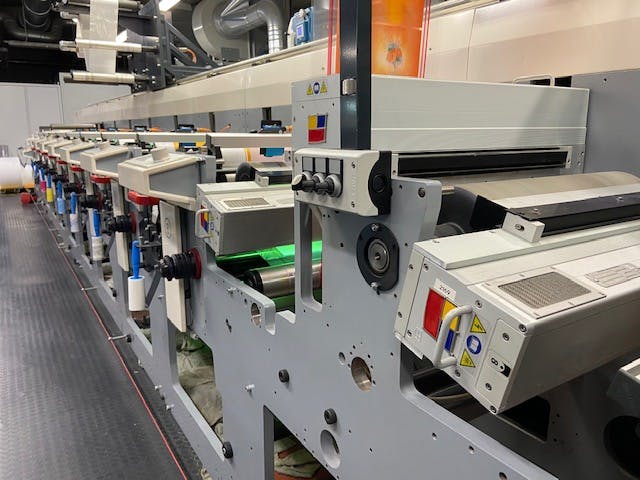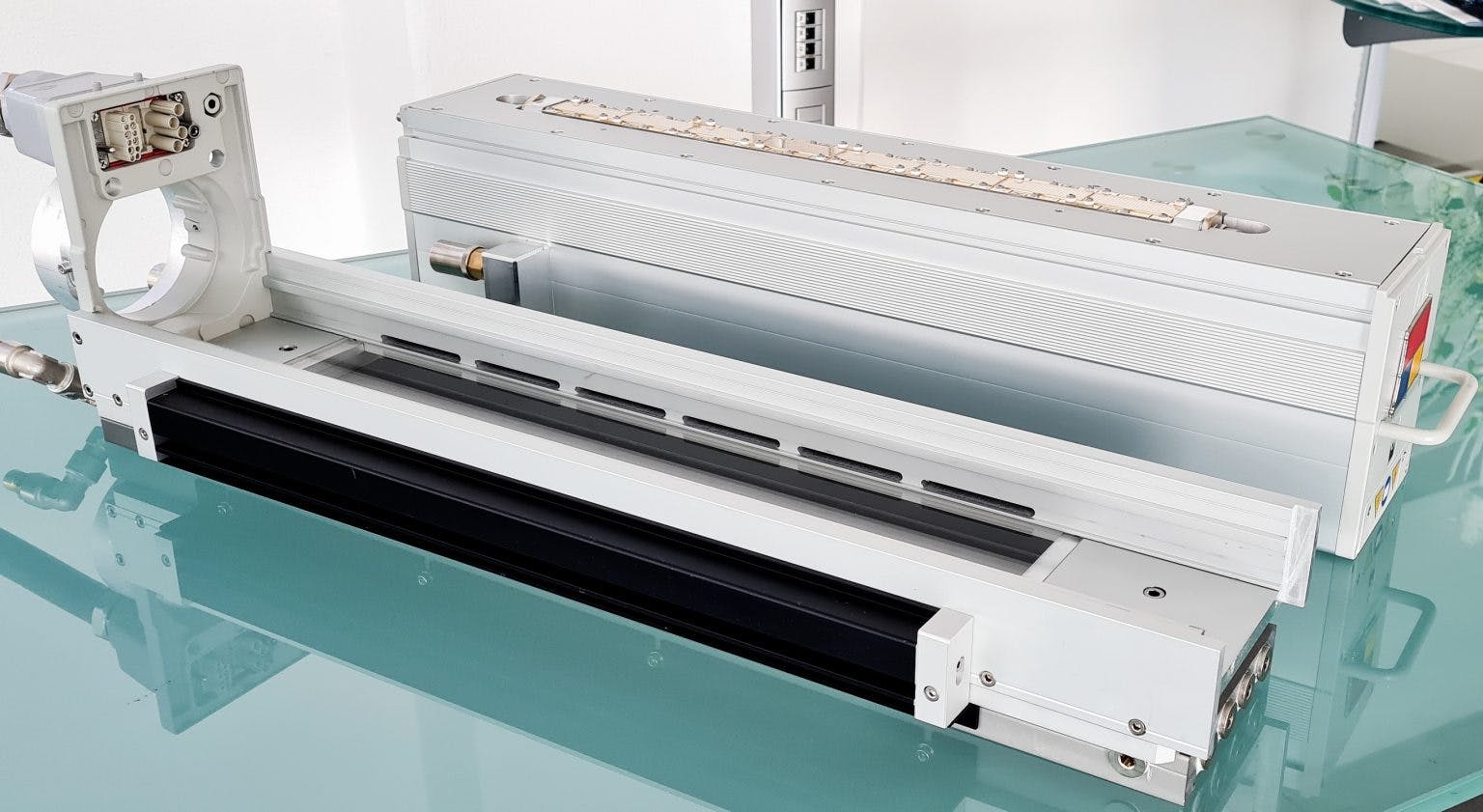Optimizing narrow web label printing

[Original article from MetaPrintArttranslated into English]
UV RAY and T&K explain how narrow web printers can optimize printing through preventive and objective analysis of real costs on presses, machine setup, and inks—providing solutions to get the most with the least with ROI calculations.
We talk about this with the key players, who introduce us to an innovative and highly useful service.
This is the win-win partnership that the two Milan-based companies are proposing, as the result of a synergy that began long ago and matured for over a year.
T&K - an acronym for Technology & Kindness, a nice way to define the company's mission based on technology and kindness - has vast experience in the field for flexo, offset and waterless inks, as well as in narrow web printing.
UV Ray, now for two generations, has earned the reputation among the most qualified companies in the manufacture and installation of UV curing systems with reflectors and LEDs.
We ask Roberto Carmelo (T&K ) what is the starting point from which this synergy began.
"The synergy has matured over time between T&K and Luca Mauri who, in addition to being a chemist, has been a printer, installer and maintainer of narrow web printing presses for years. And that's where this opportunity comes from, because T&K, with Luca, adds to its offering of consumables a real consultancy for calibration and optimization of printing, and for operator training."
So far, so good. But why specifically with UV Ray?
"Luca Mauri and Alberto Maiano know each other well and have been collaborating for years," Roberto Carmelo tells us, "working closely over the course of numerous installations of UV Ray's curing systems, both with arc lamps and LEDs on narrow web presses and semi-rotary presses. By now there is a synergy between us that can only bring concrete benefits to our customers."
ROI Calculation
The algorithm for calculating ROI, developed by the two companies, is based on optimal choices in printing.
Specifically, UV Ray will calculate which UV lamp or LED systems will be needed to optimize printing for energy savings by evaluating which drying systems are best suited for UV printing in narrow web flexo labels. Particularly for those companies planning to migrate from Hg lamps to LED.
For its part, T&K will also define a model related to inks and varnishes, based on the wide options they have in representing different manufacturers.
Stefano Maiano explains the process to us.
"The ROI calculation is very simple, I'll give you an example. Let's consider two 8-hour shifts. On the 16-hour maximum you have an actual 60 percent production. Everything else goes to labor exchange, startup, etc."
So let's look at a fairly common case: that of an 8-color, 430mm print width machine.
"Well, this one needs a 470mm lamp," Maiano continues. "With traditional UV it has 65kW at maximum power, which is equivalent to 52kW effective, keeping in mind that you are not always working at maximum power, but with 20 / 30 percent less."
In practical terms?
"This means that the yield is not 100 percent because the actual working energy never reaches the maximum, so we have to consider a real yield factor of 0.7 / 0.8."
Well, what about with LED?
"If we replace the lamps with LEDs with a final UV module for the varnish, we have a consumption of less than 32kW, a 50% dry reduction in consumption, at any given time, at maximum power, which with the rate shown before becomes less than 26kW."
So far so clear. But let's imagine that other costs have to be added, systems lifespan, spare parts and more. How is this done?
"Let's consider the hourly cost for lamps, let's say an average cost of €150 per lamp and an average life of 1,500 hours, so about 90 days of life of a lamp at €1.6/day. LED has an estimated output of 70% after 20,000 hours of operation."
How do you calculate the machine cost, without going into details here?
"The actual daily cost of a machine is calculated based on what we have indicated above. We use an algorithm, which we have studied together with T&K, that takes into account all the machine parameters, and also the updates of bill prices. To make a long story short, but if you want I'll show you all the steps, we have on average a decrease from €144 to €50."
Almost a third; quite a difference, it seems to us.
"And this does not take into account some hidden factors, such as the air conditioning in the room that is no longer needed with water-cooled LEDs, and the chiller in the machine that works less with LEDs."
Are these accounts the same on all machines?
"No, because, for example, in semi-rotary offset machines, we can have a difference of 1 to 5, because semi-rotary machines travel at lower speeds and require less energy with the LED than traditional UV lamp machines where, below a certain power you can't go anyway."
So if I understand you correctly, with this algorithm, you have safe reference points to suggest the changes you will make on the customer's machines to save energy. On average, what is time for a return on investment (ROI) in replacing lamps with LEDs?
"Let's consider a €100,000 investment, to make it round. Based with the above accounts - €37,500 to use 250 days a year a traditional UV system - we go to spend €12,500 with the UV LED system, so the savings is €25,000/year. The ROI is 4 years."

Atom LED reflector with hybrid technology and water-cooled base to keep substrate temperatures under control at all times

Magnum 550mm reflector with conventional mercury UV inside and its LED cassette to take full advantage of UV Ray hybrid technology
Conclusions
Let us not forget that the system’s ease of use allows for the same consistency of emission at any time of the day, without having to depend on the lamp and its life. T&K, in addition to the waterless offset for which it is known, supplies inks for the UV and UV LED offset and flexo printing process, UV LED flexo varnishes and other consumables. Hence all the experience needed to offer all-around consulting.
In conclusion, from this meeting with Roberto Carmelo, Alberto and Stefano Maiano we found that the win-win partnership between UV Ray and T&K is a good example to show that professionalism and technical expertise can bring tangible economic benefits to the customer.